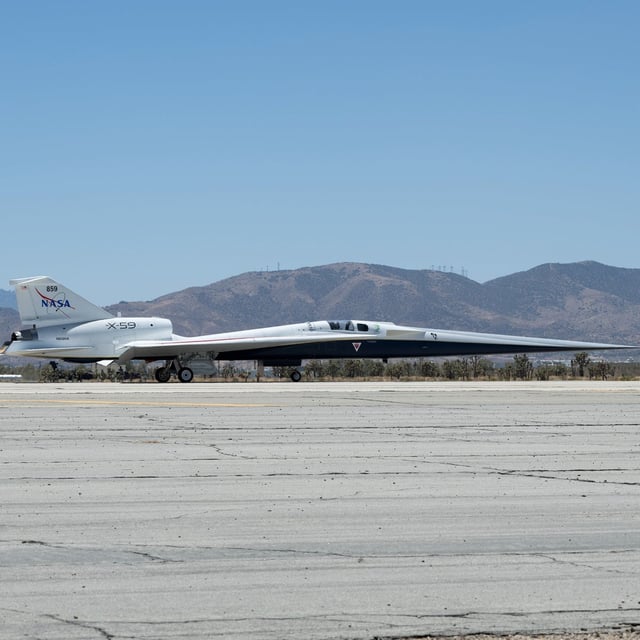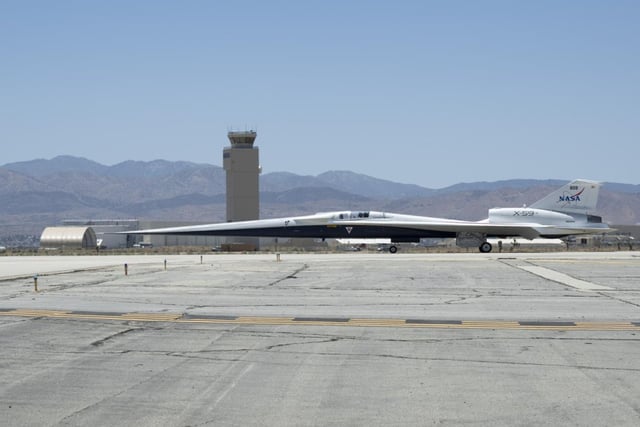Overview
- On July 10 at Plant 42 in Palmdale, California, the X-59 moved under its own power during its inaugural low-speed taxi trial.
- During the run, engineers and flight crews evaluated the aircraft’s steering, braking and other critical systems on the runway.
- The 99.7-foot research jet features a long tapered fuselage, delta wings and an external vision system designed to produce a subdued “thump” instead of a sonic boom.
- Built for NASA’s QueSST mission, the X-59 is designed to cruise at Mach 1.4 (925 mph), potentially cutting New York-to-London travel to under four hours.
- NASA plans to advance to high-speed taxi tests and conduct residential overflights in 2026 to gather community feedback on its low-boom design.

